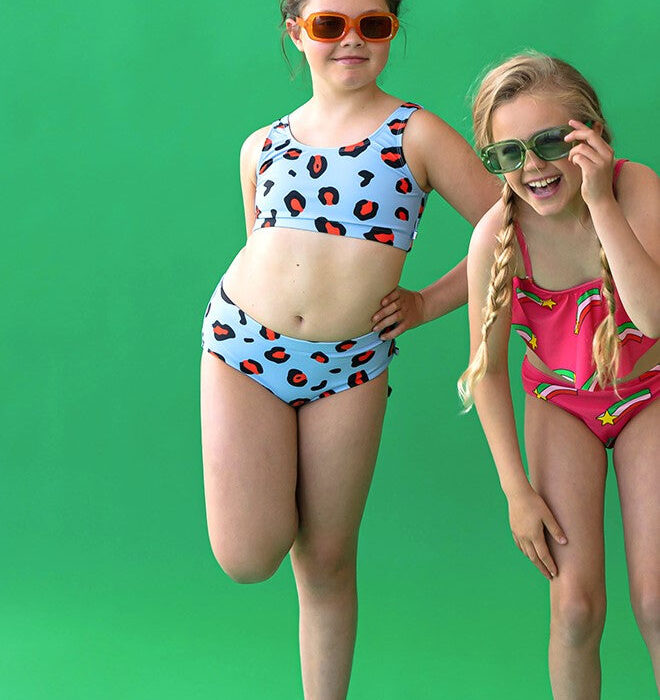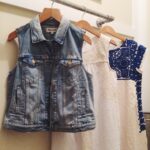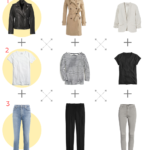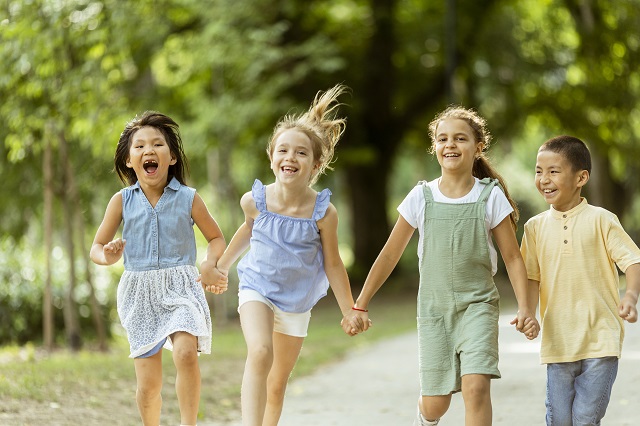Yes, kids’ summer outfits can be eco-friendly. Sustainable materials and ethical production practices make it possible.
As parents become more environmentally conscious, eco-friendly summer outfits for kids gain popularity. These garments not only prioritize comfort and style but also promote sustainability. Fabrics made from organic cotton, recycled materials, or bamboo reduce environmental impact. Choosing brands that emphasize ethical production helps support fair labor practices.
Parents can find vibrant and fun designs that appeal to children while being kind to the planet. Eco-friendly summer wear encourages kids to enjoy outdoor activities while fostering an appreciation for nature. Embracing sustainable fashion allows families to make responsible choices without sacrificing style or comfort. This summer, consider clothing that nurtures both your child and the environment.
Table of Contents
Eco-conscious Parenting
Being an eco-conscious parent means making choices that protect our planet. It involves teaching children the value of sustainability. Kids can learn to care for the environment through their clothing choices. Summer outfits can be both fun and eco-friendly. Let’s explore how to incorporate sustainability in kids’ fashion.
Incorporating Sustainability
Choosing sustainable clothing helps reduce waste and pollution. Here are some ways to make eco-friendly choices:
- Buy Second-Hand: Thrift stores offer unique outfits.
- Choose Organic Fabrics: Look for cotton and bamboo materials.
- Support Ethical Brands: Many brands focus on sustainability.
- Encourage DIY: Kids can create their own summer outfits.
Each choice sends a message about caring for the earth. Teach kids to think before they buy.
Green Choices For A Better Future
Making green choices in kids’ summer outfits is essential. Here are some ideas:
| Choice | Benefit |
|---|---|
| Natural Dyes | Less harmful to the environment |
| Recycled Materials | Reduces waste in landfills |
| Timeless Styles | Can be worn for years |
Encouraging kids to make eco-friendly choices shapes their future. Teach them the importance of caring for our planet.

Credit: www.amazon.com
The Impact Of Fashion On The Environment
Fashion affects our planet in many ways. The choices we make in clothing can lead to serious environmental issues. From resource depletion to pollution, the impact is significant. Understanding these effects is crucial for making eco-friendly choices, especially for kids’ summer outfits.
Textile Waste Concerns
Every year, millions of tons of clothing end up in landfills. This waste creates serious problems:
- Landfill Overflow: Landfills are overflowing with discarded clothes.
- Slow Decomposition: Many fabrics take years to break down.
- Hazardous Chemicals: Some textiles release harmful substances as they decompose.
Choosing durable, high-quality clothes can help reduce textile waste. Buying second-hand clothes is another great option. These choices extend the life of clothing and lessen the amount of waste produced.
Carbon Footprint Of Clothing Production
The production of clothing has a large carbon footprint. Here are some key points:
| Activity | Carbon Emissions |
|---|---|
| Growing Cotton | 1,700 kg CO2 per ton |
| Manufacturing | 3,500 kg CO2 per ton |
| Transportation | 2,500 kg CO2 per ton |
These activities contribute to global warming. Opting for eco-friendly materials can help lower these emissions. Brands that use sustainable practices also help the environment. Choosing clothing made from organic cotton or recycled materials supports these efforts.
Defining Eco-friendly Clothing
Eco-friendly clothing helps the planet. It uses sustainable materials and ethical practices. Kids’ summer outfits can be fun and green!
Materials That Matter
Choosing the right materials is crucial. Here are some popular eco-friendly fabrics:
- Organic Cotton: Grown without harmful pesticides.
- Bamboo: Fast-growing and biodegradable.
- Hemp: Requires little water and no chemicals.
- Recycled Fabrics: Made from plastic bottles or old clothes.
These materials not only help the environment but also feel good on the skin.
Ethical Manufacturing Processes
Ethical manufacturing ensures fair treatment of workers. Here’s what to look for:
| Process | Description |
|---|---|
| Fair Trade | Ensures fair wages and safe working conditions. |
| Local Production | Reduces carbon footprint by making clothes nearby. |
| Low Impact Dyes | Uses natural dyes that don’t harm the environment. |
Supporting ethical brands promotes better practices in the fashion industry. Kids can wear stylish outfits while caring for the Earth!
Benefits Of Choosing Green For Your Kids
Choosing eco-friendly summer outfits for kids offers many advantages. It promotes health, safety, and environmental awareness. Parents can feel good about their choices. Here are some key benefits to consider.
Health And Safety Aspects
Eco-friendly clothing helps protect your child’s health. Many conventional clothes contain harmful chemicals. These chemicals can irritate skin and cause allergies. Eco-friendly fabrics are often made from natural materials. This reduces the risk of skin reactions.
- Organic cotton: Grown without harmful pesticides.
- Hemp: Naturally resistant to pests.
- Recycled materials: Often free from toxic dyes.
Choosing green options ensures safety and comfort for your child. Organic clothes are softer and gentler on the skin. They are less likely to cause discomfort during playtime.
Teaching Sustainable Values
Buying eco-friendly clothes teaches kids about sustainability. Children learn the importance of caring for the environment. They understand how their choices impact the planet.
- Foster a sense of responsibility.
- Encourage discussions about recycling.
- Promote the idea of reusing and repurposing.
These lessons can last a lifetime. Kids who learn sustainability early often become eco-conscious adults. Choosing green outfits is a simple way to start.
| Eco-Friendly Fabric | Benefits |
|---|---|
| Organic Cotton | Soft, breathable, and chemical-free |
| Hemp | Durable, UV resistant, and biodegradable |
| Recycled Polyester | Reduces waste and conserves resources |
Choosing eco-friendly outfits for your kids promotes their health and teaches valuable lessons. These choices create a healthier planet for future generations.
Popular Eco-friendly Fabrics For Kids’ Clothing
Choosing eco-friendly fabrics for kids’ clothing helps the planet. Many options are soft, safe, and stylish. Here are two popular eco-friendly fabrics for children’s summer outfits.
Organic Cotton Comfort
Organic cotton is a favorite for kids’ clothing. It is grown without harmful chemicals. This makes it safer for children and the environment.
- Softness: Organic cotton feels gentle on the skin.
- Breathable: It keeps kids cool during hot summer days.
- Durability: Organic cotton lasts longer than regular cotton.
- Hypoallergenic: Great for kids with sensitive skin.
Choosing organic cotton means choosing comfort and care. It’s a win-win for your child and the planet.
Bamboo Fabric Benefits
Bamboo fabric is another excellent choice for summer wear. It comes from bamboo plants, which grow quickly and require less water.
| Benefit | Description |
|---|---|
| Softness | Bamboo fabric is incredibly soft and smooth. |
| Moisture-Wicking | It keeps kids dry by absorbing sweat. |
| Antibacterial | It fights bacteria, making it fresh for longer. |
| Eco-Friendly | Bamboo grows fast and needs fewer resources. |
Bamboo fabric combines comfort and sustainability. It’s a smart choice for eco-conscious parents.
Spotting Greenwashing In Kids’ Fashion
Many brands claim to be eco-friendly. Greenwashing can confuse parents. Understanding the tactics used helps make informed choices.
Misleading Marketing Tactics
Companies often use clever words. These words can mislead customers. Here are some common tactics:
- Vague Terms: Words like “eco” or “green” lack definitions.
- Imagery: Pictures of nature can create false impressions.
- False Labels: Fake eco-labels can mislead buyers.
Watch for these signs. They help identify true eco-friendly options.
Authenticity In Eco-labels
Not all eco-labels are real. Some brands use labels just for marketing. Look for labels with clear standards. Here are some trusted eco-labels:
| Eco-label | Description |
|---|---|
| Global Organic Textile Standard (GOTS) | Certifies organic fibers and fair labor practices. |
| OEKO-TEX Standard 100 | Ensures textiles are free from harmful substances. |
| Fair Trade Certified | Promotes fair wages and ethical production. |
Authentic eco-labels offer peace of mind. Choose brands that truly care for the planet.
How To Assess The Eco-friendliness Of Garments
Choosing eco-friendly summer outfits for kids is important. Parents want to make smart choices. Assessing the eco-friendliness of garments is a great start. This involves checking labels, understanding materials, and considering durability.
Reading Labels And Certifications
Labels on clothing tell a lot about the garment. They inform you about materials and certifications. Look for these eco-friendly symbols:
- Global Organic Textile Standard (GOTS) – Ensures organic materials.
- OEKO-TEX Standard 100 – Checks for harmful substances.
- Fair Trade Certified – Supports fair labor practices.
These certifications guarantee the clothing is made responsibly. Always check the content label. Look for organic cotton, bamboo, or recycled materials. These materials are better for the environment.
Understanding Lifespan And Durability
Durability is key in eco-friendly clothing. Long-lasting garments reduce waste. Here are some factors to consider:
- Material Quality: Strong fabrics last longer.
- Stitching: Double-stitched seams hold better.
- Care Instructions: Easy-to-care items last longer.
Choose outfits that can handle playtime. Kids will wear them often. Look for clothes that can be passed down. This reduces the need to buy new outfits.
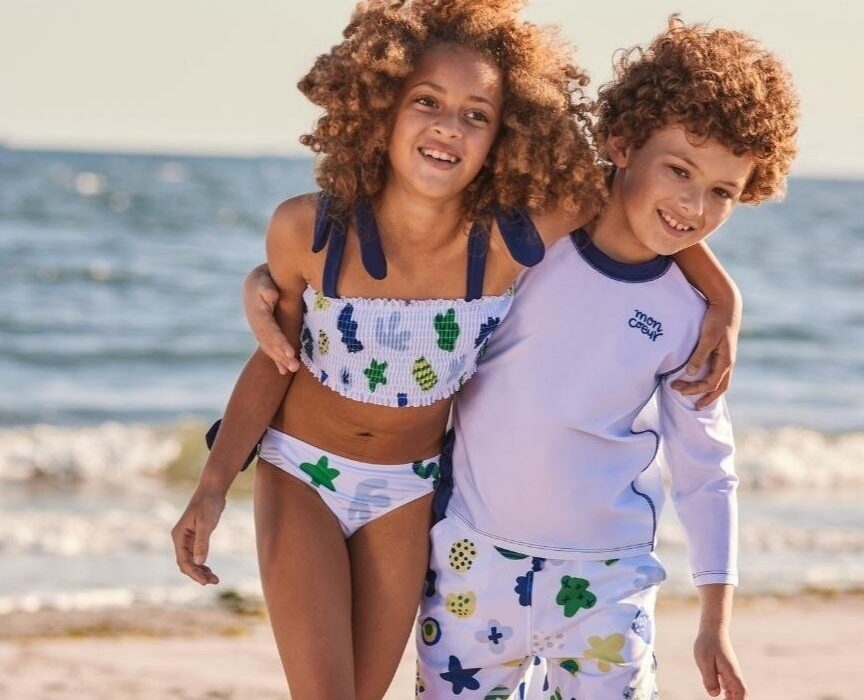
Credit: www.kiddiebliss.com
Summer Outfits: Combining Style And Sustainability
Summer is a time for fun, sun, and style. Kids want to look great while staying comfortable. Choosing eco-friendly outfits can help save our planet. Parents can find stylish options that are also sustainable. Let’s explore how to combine fashion with eco-conscious choices for kids.
Trendy Yet Timeless Designs
Kids’ summer outfits can be both trendy and classic. Look for designs that never go out of style. Here are some popular options:
- Lightweight cotton dresses
- Short-sleeve button-up shirts
- Classic denim shorts
- Stylish sun hats
These outfits can be worn year after year. Choose organic cotton or recycled fabrics for added sustainability. Timeless styles mean less waste in fashion. Kids can express themselves while wearing eco-friendly clothing.
Colorful And Eco-conscious Choices
Bright colors and fun patterns make summer special. Eco-friendly brands offer vibrant options. Here are some color choices:
| Color | Meaning |
|---|---|
| Green | Represents nature and growth. |
| Blue | Symbolizes calm and stability. |
| Yellow | Brings happiness and energy. |
Choose outfits made from natural dyes. These dyes are safer for kids and the environment. Look for brands that prioritize sustainable practices. Kids can enjoy fashionable outfits while helping the Earth.
Diy Summer Clothes For Kids
Creating DIY summer clothes for kids is fun and eco-friendly. It helps reduce waste and promotes creativity. Kids can wear unique outfits made with love and care.
Upcycling Old Fabrics
Upcycling old fabrics is a great way to make new clothes. Use materials you already have at home. This keeps old items out of landfills.
- Old t-shirts can become cute tank tops.
- Scarves can turn into skirts or dresses.
- Jeans can be cut into shorts for summer wear.
Check these steps to upcycle:
- Gather old clothes and fabrics.
- Choose designs and colors your kids love.
- Cut and sew the fabrics into new shapes.
- Let kids decorate with patches or fabric markers.
Natural Dyes And Handmade Appeal
Using natural dyes makes clothes safe and colorful. You can find dyes from fruits, veggies, and flowers.
| Source | Color |
|---|---|
| Red cabbage | Blue |
| Beetroot | Pink |
| Turmeric | Yellow |
| Avocado pits | Peach |
Follow these steps to dye fabric naturally:
- Choose your dye source.
- Boil the source in water for 30 minutes.
- Strain the liquid into a bowl.
- Soak the fabric in the dye for a few hours.
- Rinse and dry the fabric.
Handmade clothes offer charm and personality. Kids will love wearing outfits made just for them.
Caring For Eco-friendly Clothes
Taking care of eco-friendly clothes helps protect our planet. Proper care extends the life of garments. It also keeps your kids looking great all summer long.
Eco-friendly Laundry Tips
Washing eco-friendly clothes requires special care. Follow these tips for effective laundry practices:
- Wash in Cold Water: Cold water saves energy and prevents shrinkage.
- Use Mild Detergents: Choose biodegradable and non-toxic options.
- Skip the Dryer: Air drying preserves fabric quality.
- Wash Less Often: Spot clean instead of washing for minor stains.
Extending The Life Of Garments
Keeping clothes in good shape is simple. Follow these steps to extend their life:
- Store Properly: Hang or fold clothes neatly to avoid wrinkles.
- Repair Damage: Sew small tears and fix loose buttons quickly.
- Rotate Wardrobe: Mix and match outfits to reduce wear on favorites.
- Teach Kids Care: Show children how to handle clothes gently.
| Tip | Description |
|---|---|
| Cold Water Wash | Save energy and keep colors bright. |
| Biodegradable Detergents | Gentle on skin and the environment. |
| Air Drying | Reduces wear and tear from tumbling. |
| Quick Repairs | Fix small issues before they worsen. |
The Role Of Brands In Promoting Green Kidswear
Brands play a crucial role in making kids’ summer outfits eco-friendly. Their choices shape how families view sustainable fashion. By using sustainable materials, brands can reduce environmental impact. Parents seek stylish, safe, and eco-conscious options for their children.
Pioneers In Sustainable Fashion
Some brands lead the way in sustainable kidswear. They prioritize the planet while creating fun and trendy styles. Here are a few pioneers:
- Patagonia: Uses recycled materials and promotes fair labor practices.
- Frugi: Focuses on organic cotton and vibrant designs.
- Mini Rodini: Offers playful designs made from sustainable fabrics.
Commitment To Eco-friendly Practices
Brands committed to eco-friendly practices use various strategies. They reduce waste and minimize pollution in their production processes. Here are some key practices:
| Practice | Description |
|---|---|
| Organic Materials | Using cotton, wool, and other fabrics grown without chemicals. |
| Recycling | Creating clothing from recycled materials to reduce waste. |
| Ethical Labor | Ensuring fair wages and safe working conditions for workers. |
| Eco-Friendly Packaging | Using biodegradable or recyclable materials for shipping. |
Brands that adopt these practices inspire families to make sustainable choices. They help teach children the importance of caring for the environment.
Involving Kids In Sustainable Fashion Choices
Teaching kids about sustainable fashion is fun and rewarding. It helps them understand the environment. They learn how their choices affect the planet. Involving kids in these decisions builds their awareness. They become responsible consumers as they grow.
Fun Learning Activities
Engaging kids in activities makes learning enjoyable. Here are some creative ideas:
- DIY Upcycling Projects: Transform old clothes into new styles.
- Fashion Shows: Organize a show with eco-friendly outfits.
- Nature Walks: Explore local flora and fauna for inspiration.
- Fabric Dyes: Use natural dyes from fruits and vegetables.
These activities spark creativity. They also teach kids about the importance of recycling.
Making Conscious Decisions Together
Involve kids in choosing their outfits. Discuss the benefits of eco-friendly materials. Use these tips to guide the conversation:
- Explain the impact of fast fashion on the environment.
- Encourage them to pick clothing made from organic cotton.
- Share stories about brands that focus on sustainability.
- Help them understand the importance of buying less.
Ask questions to encourage their opinions:
| Question | Purpose |
|---|---|
| What do you like about this outfit? | Promotes critical thinking. |
| How can we make this outfit eco-friendly? | Encourages problem-solving. |
| Which colors remind you of nature? | Connects fashion to the environment. |
These discussions empower kids. They learn to make smart fashion choices.
The Future Of Children’s Fashion
The future of children’s fashion is bright and green. Parents want stylish outfits that also care for the planet. Eco-friendly clothing is becoming a top choice. Kids’ summer outfits can be trendy and sustainable.
Innovations In Eco-friendly Textiles
New materials are changing how we think about kids’ clothes. These textiles are not only safe but also good for the Earth.
- Organic Cotton: Grown without harmful chemicals.
- Bamboo Fabric: Soft, breathable, and biodegradable.
- Recycled Polyester: Made from plastic bottles and waste.
These innovations help reduce waste and pollution. They make summer outfits light and comfortable.
The Growing Demand For Green
Parents are increasingly choosing eco-friendly options. This trend is driving change in the fashion industry.
| Year | Percentage of Eco-Friendly Purchases |
|---|---|
| 2020 | 25% |
| 2021 | 35% |
| 2022 | 45% |
This growth shows that families care about the planet. Children’s fashion can be both fun and eco-friendly.
- Support brands that focus on sustainability.
- Choose clothes made from recycled materials.
- Look for local brands to reduce carbon footprint.
Smart choices today lead to a better future for our children.
Frequently Asked Questions
Can Kids’ Summer Outfits Be Sustainable?
Yes, kids’ summer outfits can be sustainable by using eco-friendly materials and ethical production practices.
What Materials Are Eco-friendly For Kids’ Clothing?
Organic cotton, bamboo, and recycled fabrics are great eco-friendly materials for kids’ summer clothing.
How Can I Choose Eco-friendly Kids’ Outfits?
Look for brands committed to sustainability, check labels for organic materials, and prioritize second-hand options.
Are There Eco-friendly Brands For Kids’ Summer Wear?
Yes, brands like Frugi, Mini Rodini, and Hanna Andersson focus on eco-friendly practices and materials.
Why Is Eco-friendly Clothing Important For Kids?
Eco-friendly clothing reduces environmental impact, promotes sustainability, and ensures healthier options for children’s sensitive skin.
Conclusion
Choosing eco-friendly summer outfits for kids is both fun and impactful. Sustainable fabrics and brands contribute to a healthier planet. Parents can teach children about eco-conscious choices through their clothing. Embracing eco-friendly fashion fosters a sense of responsibility and creativity.
Together, we can make a positive difference this summer.



